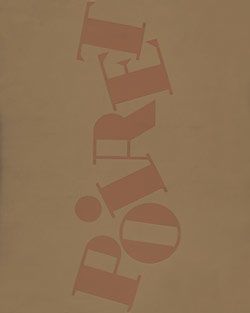Dress
Designer Paul Poiret French
Not on view
In Poiret's oeuvre, leitmotifs distinguish his designs that, otherwise, conform to prevailing fashions. This dress, from the year before his couture house closed, reflects the period of transition from the recto-verso planarity characteristic of the 1920s chemise dress to a period when the cubistic fracturing of a garment made a design's construction comprehensible only in rotation. This spiraling of the fabric and the resulting asymmetry appeared with greater frequency in the work of Poiret's contemporaries, but the designer's preference for draping on the body, seen in works such as his 1919 'Paris' evening coat, suggests an early predisposition for this approach to dressmaking. Where Poiret differs from other designers, most notably the great innovator of the bias cut, Madeleine Vionnet, is in his preference for working on the straight grain.
The innovative cut of this dress is masked by the arcing silk-satin appliques. The dress is made of four pieces of fabric but not disposed in conventions of front panel, back panel, and sleeves. Instead, it comprises two sleeves, a large continuous pattern piece forming the front and back bodice of the dress and most of the skirt, and a gathered skirt panel at the right side that forms the asymmetrically pointed hem. If the fabric had been wide enough, Poiret would have been able to cut the dress in one piece, with only the sleeves as an addition. Rather, he has extended the crosswise length of the fabric by attaching the gore with its seam on grain. While it is signature Poiret, the structuring of the dress is not explicit. More readily identifiable are the decorative embroidery, an abstracted feather motif that is applied like a closure at the waist of the dress, and the scrolling satin appliques alluding to the designer's orientalist interests.
Due to rights restrictions, this image cannot be enlarged, viewed at full screen, or downloaded.
This artwork is meant to be viewed from right to left. Scroll left to view more.










